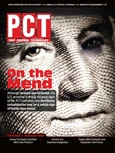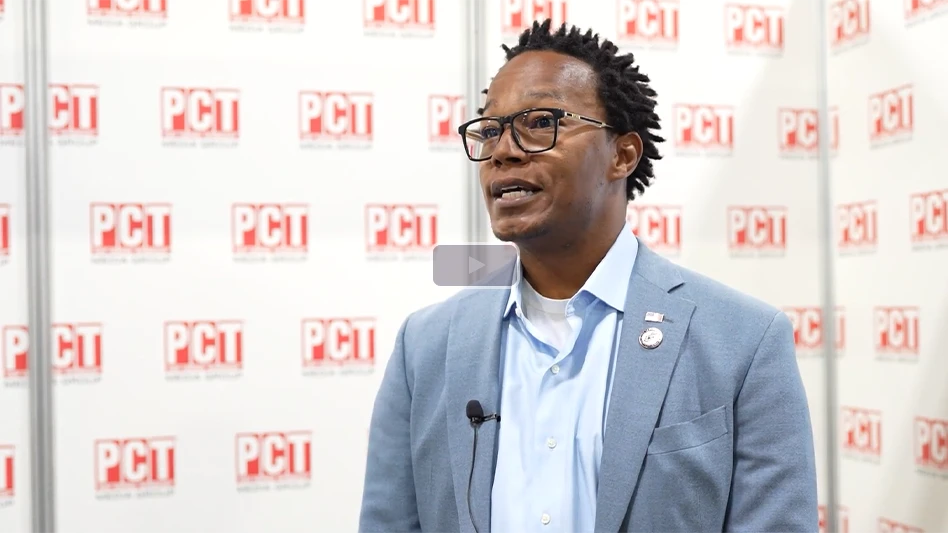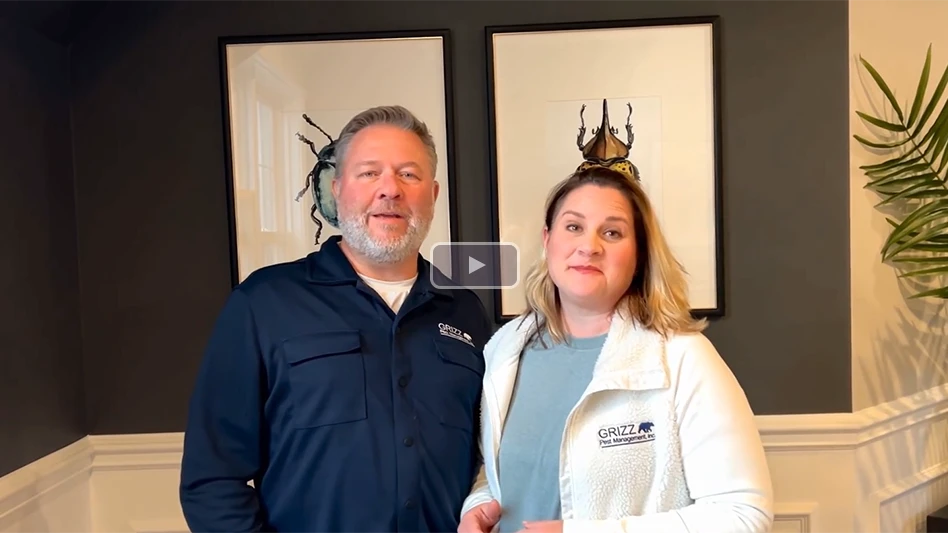"Green" is everywhere we look in today’s marketplace — "green building," "green cleaning," "green energy," "green cars," and yes, "green pest management."
But what’s in a name? Isn’t "green" pest management just another name for IPM? Integrated Pest Management has been around for a long time. The stated goal of IPM has always been to reduce the impact of pesticides on people and the environment. Isn’t that "green" pest management? Or, is "green" truly different than the way we have practiced pest management in the past, including Integrated Pest Management?
Confused? When I was first designated the "Green Guy" at Terminix International in 2008, even I was unsure. Terminix had been selling and practicing IPM for years. So what was so different about "green?"
After experimenting with a green pest management service plan in early 2008, Terminix learned that green really is different than the way IPM was practiced in the past. IPM is a concept, a philosophy. But green takes IPM one step further by creating very specific rules and processes. Customers have very different expectations when a product is labeled "green."
In March 2009, Terminix launched EcoControl, a commercial service plan that conforms to the standards of NPMA’s GreenPro and to the protocols of "Green Cleaning: Indoor Integrated Pest Management" of the U.S. Green Building Council’s LEED (Leadership in Energy and Environmental Design) Building Rating System.
Since the launch of Terminix EcoControl in 2009, I have learned much about crafting a green service plan — lessons that can serve other pest management firms well when crafting their own green design. First, we need to recognize the confusion and the misunderstandings about green pest management.
What’s ‘green’? "Green" is simply a popular buzzword for any activity that is environmentally responsible. It’s a catch-all term for adopting business and lifestyle changes to reduce negative impacts on the environment. Many of us are engaged in one or more "green" activities in our homes and in our businesses. Examples include recycling, weatherproofing, use of more fuel-efficient vehicles, routing and scheduling tactics that reduce miles driven, thereby reducing the use of fossil fuels (implementation of in-truck GPS systems/computer-assisted routing and scheduling reduced gasoline consumption by 675,000 gallons for Terminix during 2008, the first year), electronic filing and record keeping, thus reducing the use of paper.
OK, fine! But, what is this thing called "green pest management"? And, can effective pest management be truly green? One consumer in a focus group conducted by the National Pest Management Association asked, "Aren’t ‘pest control’ and ‘green’ used in the same sentence an oxymoron?" Does green mean no pesticides and only natural products or pesticides identified in the San Francisco Reduced Risk Pesticide List? Is it least toxic, and what is least toxic? Are there shades of green? Is my green service greener than yours?
Needless to say, there is plenty of confu-sion to go around. If I were to ask 20 different PMPs to describe a "green" service, I am likely to get 20 different answers. Never mind the varied responses that I would get from consumers. If I were asked, I would say that any pest management service that was performed in conformance with the standards and protocols of a recognized third-party certifying organization such as the NPMA GreenPro Certified, GreenShield Certified or EcoWise Certified, could be called a green pest management service plan. These certifying organizations have laid down the rules and processes that move a service from the conceptual IPM to a true green service plan. But whatever your plan, any green service MUST start with communication.
Tip #1: Establish a Partnership. Your customers must understand that "green" pest management is a cooperative effort. The responsibility for controlling pests in and around their homes or businesses does not all fall on you. It is vital to your success as a provider of a "green" service that you educate your customers about their responsibilities. Customer responsibilities include (naming just a few):
- Keeping a well-maintained, pest-proof structure
- Ensuring that all doors and windows are properly screened and kept closed when not being used
- Removing as much food for pests as possible
- Employing proper storage tactics
- Eliminating clutter
- Practicing proper trash management
- Maintaining solid landscaping practices by utilizing plants, shrubbery and trees that are not highly susceptible to honeydew-secreting insects, such as aphids and scale insects
- Exercising proper light management
- Preventing commonly controllable moisture conditions such as plumbing leaks, poor ventilation, poorly sealed windows, etc.
- Listening to and complying with reason-able recommendations
Any customer who is unwilling to enter into a partnership is not a good candidate for a "green" pest management service. It is also important that you set realistic expectations. If you fail to set realistic expectations right at the start, you are doomed to have an unhappy customer. You should first set pest threshold levels before a conventional pesticide is used.
Additionally, your service should follow a prescribed escalation process by employing non-chemical methods first, then low-impact pesticides if pests are still present, then conventional materials if needed. In other words, pest "control" may not be instant. The customer must accept that control may take a little longer.
Regular customer feedback is also critical to creating a solid partnership. Methods of feedback may include pest sighting logs or regular interviews with your customer. It is important that you have a system whereby your customers can give you information about pest activity, can comment about what is working and what is not and can share their reaction to the pest management plan.
When your customer talks, you have to listen! You can learn much about pest activity and what is working and what is not, and about the occupants’ activities that may impact pests. It is important that you listen to your customer to understand their level of satisfaction and their commitment.
Tip #2: Get a detailed history. At the very beginning of the service, take time with your customer to record a detailed history of past pest activity, pest management strategies that have been applied, past results and your customer’s past experience with green strategies. This history provides you with vital information needed to formulate your green plan. Additionally, this information is not only critical to the formulation of your green strategies, but is also helpful in understanding your customer’s needs and expectations.
If available, review your customer’s records of past pest activity. Survey both the inside and the outside of the structure. Record any evidence of pests and conditions conducive to pests on a diagram, floor plan or map of the structure or facility. After completing your survey, draft a written report. The report can be as simple as a checklist or as formal as a detailed written report complete with photographs.
The Latin proverb "Praemonitus, Praemunitus," translated "forewarned is forearmed" was first translated into English in the 16th century. Although the proverb is old, it is just as fresh and current today as it was hundreds of years ago. Its meaning transcends its original military use — having prior knowledge is the best way to be prepared.
Tip #3: Monitor. It is well known that early detection in medicine can often mean the difference between success and failure. Monitoring for early signs of cancer and heart disease is commonplace and is an integral part of any total wellness program. The same is true in pest management. Monitoring has long been an important tool used in the IPM programs in agriculture, forestry and public health.
In structural pest management, monitor-ing for pests is every bit as important. Early detection of pests through monitoring can often mean the difference between success and failure, especially in a green program, and should NOT be thought of as optional. If we are to meet our goal of minimizing pesticide use and exposure, we must detect infestations early.
Every monitor should be numbered and accounted for on every service visit. Place your monitor locations on a floor plan or diagram. This will help you hone in on the source or location of the detected infestations and will help determine whether you are gaining control or not.
Monitors include pheromone traps, sticky traps, glue boards, insect light traps and Detex Blox. When using monitors, it is important to remember the following:
- Monitoring devices are poor at controlling pests.
- Monitoring devices are excellent for determining the presence and source of pests.
- Even though monitors are our best and most sensitive tool for detecting pests, they are not infallible.
- Good visual inspections with flashlights and non-chemical flushing (heat and moving air) are still necessary.
Tip #4: Limit your target pests. Not all pests in all situations are good candidates for green methods. Consider carefully whether you want to include such pests as carpenter ants, field crickets, stored product pests, fire ants or Argentine ants in your green agreement. While carpenter ants may not be a significant challenge in Southern California or Arizona, they can be a serious test in the Pacific Northwest. Fire ants may not be an issue for green control strategies in parts of the country with light pressure, but could be a nightmare in Texas or Florida. While many stored product pests easily can be dealt with by non-chemical methods in most residential settings, they can be problematic to control with green protocols alone in a commercial bakery. If you don’t feel that you can adequately control Argentine ants without performing periodic perimeter band/barrier treatments with conventional pesticides, then you should not include them in your green plan.
Limiting your target pests on a "green" agreement does not mean that you cannot render services to control these pests. It only means that your customer must understand that "excluded" pests may NOT be able to be controlled as part of your green service.
Tip #5: conducive conditions. A "conducive condition" is any condition that may contribute to a pest infestation. Conducive conditions include, but are certainly not limited to, the following:
- Commonly controllable moisture conditions, i.e., plumbing leaks, poor ventilation, standing water, poorly sealed windows and doors that allow for rain seepage
- Food debris
- Clogged drains
- Dirty drains
- A Dumpster within 50 feet of the structure
- Heavy vegetation too close the structure
- Improper lighting, such as mercury vapor lights directly over doors
- Clutter
- Poor storage practices
- Poor housekeeping practices
Eliminating, or at least significantly reducing conducive conditions, is paramount to the success of your green service. Rodent proofing, caulking and sealing, screening, installation of door sweeps, etc., not only enhances the effectiveness of your service, but also can be a source of additional revenue. Adjusting conducive conditions is a valuable service. Many customers lack the skills or resources to make these corrections. If you make the corrections for them, they are much more likely to get done.
Either you correct the conditions yourself and bring in extra revenue, or you encour-age your customer to make the corrections themselves. The bottom line, however, is that conducive conditions must be corrected for green pest management to succeed.
Tip #6: Know your targeted pest. If there were ever a need to understand the history, biology and behavior of your targeted pest, it comes when performing a green pest service. All living things need food, water and a suitable habitat space. Remove or limit any one of these, and you eliminate or limit the population potential.
Is it helpful to know that Norway rats originated on the treeless grassy steppes of Asia, where their only shelter was below ground or in amongst rock debris? Or that roof rats come from tropical regions where they mostly live and forage high in the trees? Or what about knowing that the German cockroach, in its native habitat, is a scavenger beneath the leaf litter on the floor of a tropical forest? The answer to all should be a resounding, "yes."
FINAL THOUGHTS. In crafting a green pest management plan, remember to:
- Establish a partnership
- Record a detailed history
- Monitor
- Limit your target pests
- Control conducive conditions
- Know your target pest
The green market is growing. We, as an industry, need to be ready to meet those demands. At Terminix, our green program has evolved over the years as we have learned what works and what doesn’t. We’re proud to report that we have enjoy-ed much success experimenting in the green residential market and in launching Terminix EcoControl to the commercial market. I sincerely wish you the best in your own endeavors in crafting your green pest management plan.
The author is quality assurance manager for Terminix International, Memphis, Tenn. With nearly 35 years in the pest control industry, Anderson is an Associate Certified Entomologst by the Entomological Society of America. He can be reached at landerson@giemedia.com.
*****
Crafting Terminix’s EcoControl Program
Formally launched in 2009, the EcoControl Program from Terminix International targets commercial clients and is a pest management system designed to help ensure a more sustainable environment. While traditional pest control services in the commercial segment have long emphasized treatments using pesticides as the primary method for dealing with infestations, the EcoControl Program stresses pest prevention first in order to be more environmentally conscious. Terminix EcoControl takes the Integrated Pest Management approach to another level by focusing on pests long before they become a problem.
As a result, the system is a much more thoughtful approach to pest control, requiring more precise communications between the company and its clients. Instead of simply tackling a situation with routine application, the EcoControl Program’s initial question phase helps determine the ultimate green course of action by asking the following questions — What pest is present? Where is the source of the infestation? What contributing conditions are present?
In addition to focusing on inspection, monitoring and correction of pest-conducive situations, Terminix EcoControl also utilizes natural treatment substances like plant essential oils in its Terminix Natural Pest Control and Terminix Natural Pest Control Drain Fly Killer. The company also employs alternate methods like trapping and vacuuming. Other low-impact products that are required under the EcoControl system include insect baits and Insect Growth Regulators.
Commercial clients with existing programs for environmental sustainability will find EcoControl valuable because it was designed to complement and enhance these approaches, the company reports.
The program meets qualifications mandated by NPMA GreenPro and is compliant with the IPM requirements of the U.S. Green Building Council’s LEED (Leadership in Energy and Environmental Design) rating system.

Explore the June 2010 Issue
Check out more from this issue and find your next story to read.
Latest from Pest Control Technology
- Webinar: ActiveGuard Will Positively Impact Your Bottom Line
- MGK Announces EPA Registration of Botanical Active Ingredient Veratrine
- Termite Control Sales Strategies
- NPMA Announces ELP Class of 2025
- Termite Control Tools and Equipment for PMPs
- Choe Reviews Drywood Termite Geographical Hotspots, Latest Research Findings
- Mosquito Squad Announces Rebranding to Mosquito Squad Plus
- Pest Control Equipment: If it’s Critical, Back it Up!





